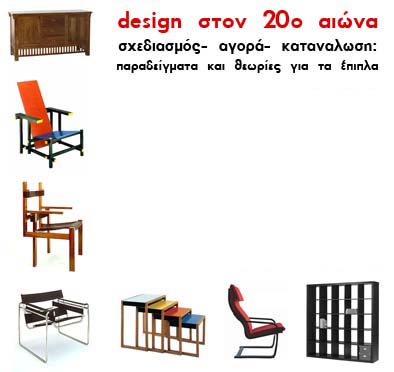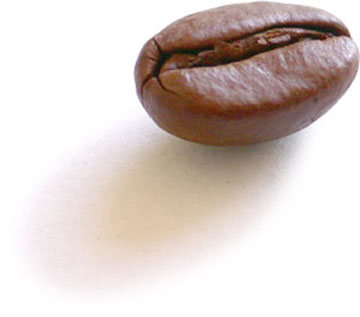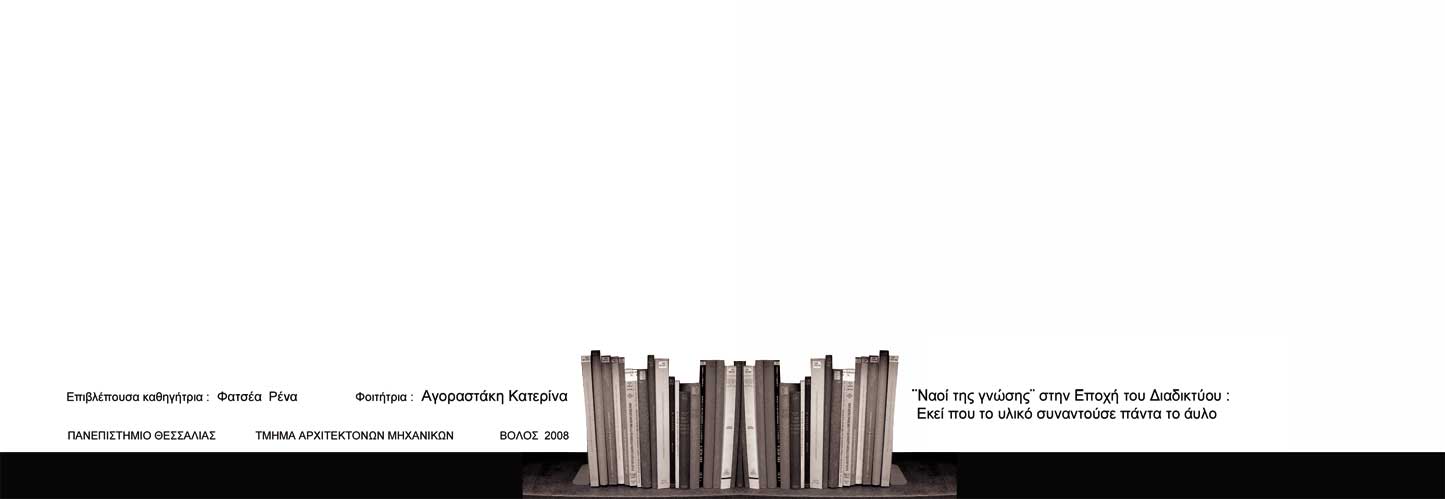

This dissertation attempts to comment upon some basic parameters that are relevant to industrial design –as it developed during the 20th century- with immediate references to furniture design and construction.
Starting from the aspect of design, there is an extensive reference to the Bauhaus School, where –among other things- the extremely productive furniture workshop operated. Works by great masters- designers, and even by apprentices, were produced there, many of which stood out due to their pioneering form and functionality constituting a milestone as far as furniture design is concerned in the 20th century. Within this framework, the rationale of the operation of the Bauhaus School is presented, as well as some more specific historic elements about the operation of the furniture workshop, important designers that worked in it, and lastly, some representative pieces of work that were produced there.
Moreover, some of the ways the relationship between the market and furniture design and production was expressed are also examined here. In specific, the study focuses on the products and the operation of the international chain of department stores, IKEA, which, admittedly, constitute a contemporary phenomenon in the market and consumption field. In addition, there is an attempt to comment upon “democratic design” that IKEA itself believe to be producing and providing their consumers with, along with the connection of mass design with the consumption trends that can be observed in recent times.
Supervisor: Stylidis Iordanis
Reference Number: 192


The first monuments of Volos were constructed in the end of the 19th century, while during the past twenty years there has been noticed an increase of their number. On the whole, they can be categorized in four general types: memorials, plaques, columns and sculptures, however, most of them represent eminent personalities of the city. Five essays attempt to inverse the traditional ‘reading’ of the monumental forms, to study their relation with the urban space and its citizens, as well as to redefine them, through personal associations and relative comparisons. The monuments are selected according to their thematology and their form. There can be found monuments with historical content, war victims’ memorials, individuals’ memorials, monuments with political projections and graves. The research is focused on the oddnesses revealed through the observation of the form and its installation space.
Supervisor: Psychoulis Alexandros
Reference Number: 224


The building of TATE Modern in London, a work of the architects Herzog & De Meuron as a museum of modern art, is used as the base for the investigation of the structured space and the experience that one gains inside it.
The inner façade of TATE Modern, the “screen wall” with the bay windows motivated the need for a new meaning of the “depth of the surface” concept and the re-determination of the inner façade. This inner façade is a “live” element that constantly provokes the “reconstruction” of the building’s images. We claim that the depth of the surface is perceived through the gradual conversion of the two-dimensional into a three-dimensional space, which is in fact a conversion of the front sight to a diagonal look. This conversion is combined with the degrees of privacy of the spaces that surrounds it and the change of the scale’s impression.
Crucial boundaries are tracked down and set the boundaries from vertical levels. Between these boundaries there are intermediate spaces, the “extended thresholds”. The transition time from one boundary to another is connected to the gathering of spatial information, as well as with contraction and release, since the segmental spatial concept is substituted by a sudden disclosure of the “whole”.
Focusing on “screen wall” with the bay windows and their hybrid character, we can see how an architectural element contributes to the design of the whole building, and how the general design gives characteristics and qualities to its divided elements.
Bay windows function as converters of the two-dimensional space to a three-dimensional one, giving depth to the surface of the “screen wall” depending on the movement or the position of the human body and look.
In general, the management of a boundary and the depth of the surface of this boyndary can function as a synthetic tool and factor for creating complicated relationships among the divided spaces of a building, the general volume of a building and of its surrounded space. The divided elements that constitute the surface can give information for the building itself, re-determine and give meaning again to its spaces, enhancing the visitor’s experience even more.
In every case, the human body through its movement and behavior is the medium for the activation of the meaning of the architectural space.
Supervisors: Lykourioti Iris, Gavrilou Evelyn
Reference Number: 202


575 a.c.
The coffee seed discovery.
It is called, ‘the one that prevents sleep’ and its consumption is related with everyday life.
It is produced in the most deprived areas across the world, while it is consumed massively by the most developed countries.
Coffee might be either the issue or the cause of social gathering.
The places where coffee is served are nowadays characterized as urban.
The world of coffee has been created_
Coffee is not just a break, it has symbolic value, it is a social activity which counts in everyday life.
In this unique geographic point, this local border,
the coffee house,
‘I am drinking’, means table companionship,
hence association with others.
Social groups are formed inside it, which cooperate
and help each other.
Each story is unique even if it takes place in the same room, on the same table.
-you get informed, you meet your friends-
A person at a coffee table reveals his uniqueness.
The cultural coffee houses of Paris accumulated the urban public spaces of the city.
An artist identifies himself with a coffee shop.
Modern greek life style is linked with the coffee house.
Scent of coffee and cigarette, sound of people talking. Tastes of choice and need.
Coffee either a habit or a need of sociability and taste.
Supervisors: Kotionis Zissis, Giannisi Phoebe
Reference Number: 196


The subject of this research paper is the library both as a public institution and as an architectural structure in the context of contemporary culture. The study traces the role of the library back to the beginnings of human civilization in order to make evident its functional necessity during all times and the changes it has undergone for keeping up with the particular social and cultural circumstances of every period. Thus the endurance and continuous development of the institution is documented based on the constant human need to both enhance and share knowledge as a highly valued public good. Libraries of various kinds (e.g., national, public, university-based, etc.) are studied and analyzed as architectural structures which provide the conditions for the macrocosm of immaterial knowledge to be accommodated in the material realm of an architectural structure with its various design, formal, functional, environmental, and other requirements. A special emphasis is paid to the ways in which a library structure meets the human standards for bodily and perceptual convenience, orientation, and easy access to the resources so that the way to knowledge becomes both an interesting and an enjoyable experience. In the age of digital technology the library is facing the challenge of properly redefining its role as a facilitator to global information accessing. As an enduring “temple of knowledge” the library today, instead of being diminished, or even effaced, by the new means of technology, develops new ways to incorporate them in its mechanism, while at the same time it continues to safeguard quality standards and engage its users in a collective pursuit of knowledge. Through an extensive series of worldwide examples this paper scrutinizes the alternative ways that contemporary architects use in their new library designs for meeting this challenge and for creating small urban paradises in which the material will always meet the immaterial.
Supervisor: Fatsea Irene
Reference Number: 230


The current research endeavors to analyze and reconstruct the ever-changing patterns of movement through various symbolic systems (art, dance, architecture). The initial incentive was the recording of the movement of the human body with a video camera and a photographic camera during the dance show “Under Cinderella’s skirt” performed by the group “Smack Dance Company”. Through the procedure of recreation and re-description of the movement of the human body (realm of Art) and through the analysis of the manner that the dancer manipulates his/her body in relation to the force of gravity (realm of dance), certain conclusions have been reached that have been expressed via various diagrams, which we have constructed. It is an undeniable fact that the data which have arisen, due to our research, have affected our way of thinking during the entire time of drafting this dissertation and, as a result, have lead us to a non-linear approach to the subject’s analysis. The aforementioned new data that have arisen through the described procedure have broadened and enhanced our perception regarding the manner that the human body reacts in the three-dimensional space, thus revealing new parallel relationships between them (Forsythe language) and determining the way of interpreting selected spatial examples (vertical panels – Storefront Gallery N.Y., horizontal panels Stage Set Opera Bonn).
Supervisor: Lykourioti Iris
Reference Number: 212


This special research topic is at first place an effort of mine to understand, and thereafter to present in an analytical way, a subject that seems odd and uncanny as far as it concerns our post-modern epoch. The theme of this essay is the state of banquet, focused to the upper social classes of two different countries in West Europe, United Kingdom and France, of the 17th century. What I am considering here is the specific spatial environments and the permanent or ephemeral structures that were produced so as to accommodate these actions. A matter of main interest here is the determination of conceivable correlations between the production of space – where a state banquet was taken place- and the symbolic content that this action may have at that period.
Supervisor: Fatsea Irene
Reference Number: 197


